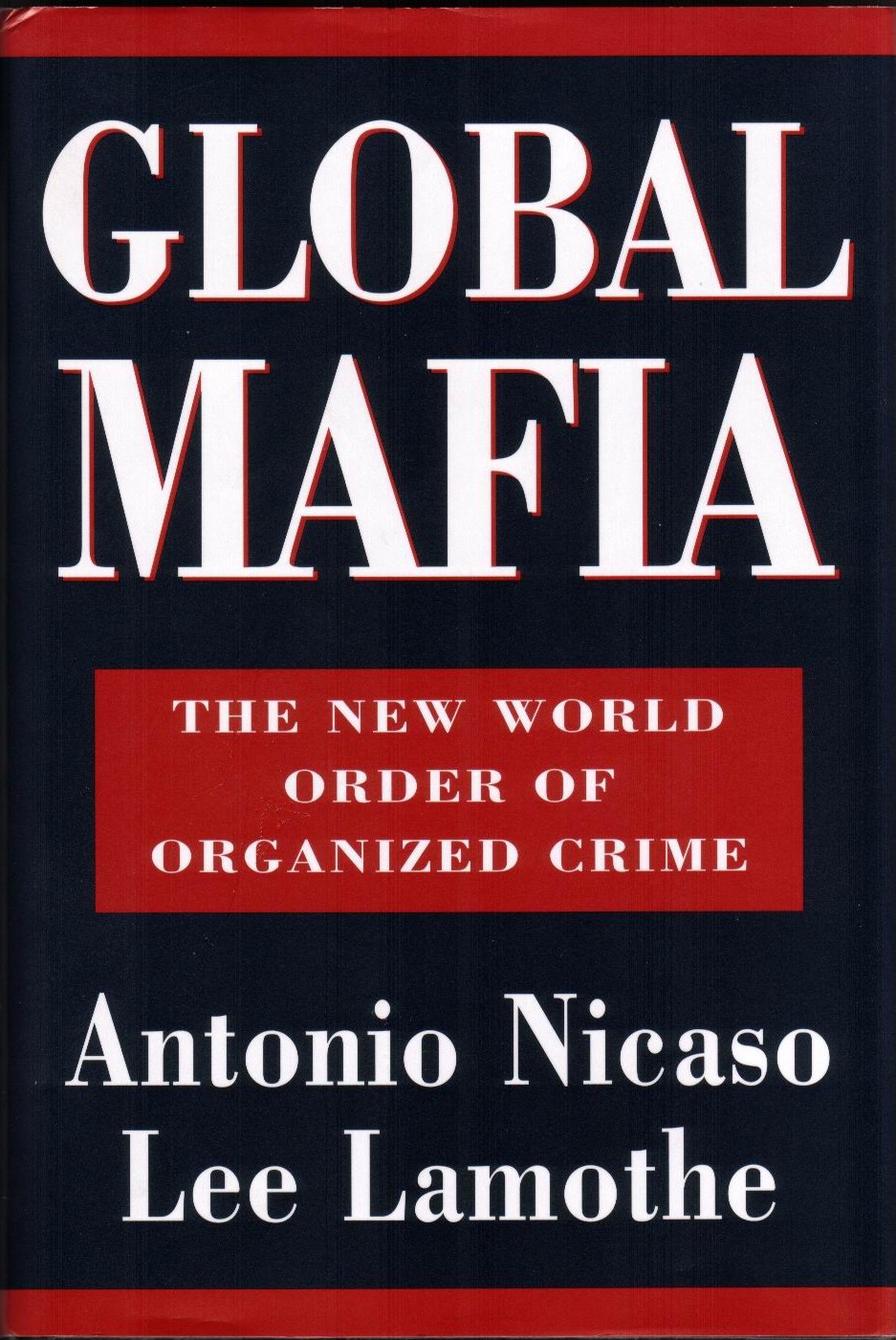International crime cartels:
the sinister side of globalization
By Leonard Gasparini / Financial Post
Global Mafia By Antonio Nicaso and Lee Lamothe Macmillan, 203 pp., $27.95
Although most criminologists are apt to regard crime as a thermometer of human society, authors Antonio Nicaso and Lee Lamothe view organized crime from a grander perspective - one that requires a weather satellite, figuratively speaking - to report their findings on the criminal climate in Canada and around the world in the 1990s.
Organized crime is so international now, that it crosses language barriers, datelines and borders with impunity, the kind of impunity that illegal profits from drugs, prostitution, money laundering, fraud, loan-sharking, gambling and the arms trade can buy.
Some of the facts mentioned in their vividly informative book, Global Mafia, are quite startling.
''At a global crime conference held in Naples in November 1994, the United Nations announced that organized crime generates US$750 billion annually.''
And according to the authors, ''the primary source of all the
billions of illegal dollars is narcotics . . . the worldwide
appetite for heroin and cocaine has funded the new global Mafias.''
In the 1980s it was estimated by the U.S. government that ''if every
dollar involved in a cocaine transaction was remove from circulation
in southern Florida, the economy would collapse.''
The authors list many organized crime groups and give a brief but
interesting account of each group's history. Thus we learn that the
origin of the word Mafia and its meaning, have been obscured by myth
and legend. We are told that in 1862, a Sicilian playwright was the
first to publicly use this word. It was registered in the Sicilian
dictionary in 1868, and its definition was ''defiance, boldness,
boastful.'' Its etymology was ''a combination of the Arabic words
mihfal, meaning an assembly or reunion, and mahyas, meaning
bravado.''
Among the numerous criminal factions included in this book are: the
Cosa Nostra, the Sicilian Mafia, the 'ndrangheta, the Chinese triads
and tongs, the Japanese yakuza, the Colombian cartels, and, more
recently, the Russian and eastern European gangs.
In their journalistic zeal to impress on the reader the magnitude
of all this criminality, the authors sometimes overshoot the mark
and inadvertently lead us to believe the whole world is run by
gangsters.
Certain parts of this book, especially the prologue and the
over-long chapter on the notorious Filonov brothers, read like
tabloidism.
However, the fact that both brothers were murdered by rival gangs
in Vancouver in the early 1990s convinced the RCMP that Canada's
most beautiful city had an active underworld. Toronto and Montreal
also figure prominently as cities in which organized crime is firmly
entrenched.
The inclusion of almost eight pages of black-and-white photographs
of criminals - either dead or doing time - lends an air of lurid
reality to the reporting. Nicaso and Lamothe should be commended for
their investigative thoroughness.
Like most oligarchies, the global Mafias are motivated by power and
greed. But what's so new about that? ''Behind every great fortune
there's a crime,'' said French author Honore de Balzac. If his
judgment pinches a moral nerve, then the illustrious names of many
plutocrats come to mind, and economic survival of the fittest takes
on a new and sinister meaning.
The authors, who begin their book by sounding the alarm that Canada
- because of its ''proximity to the U.S., weak currency laws, lax
immigration policies, and soft criminal sentencing'' - is becoming
''a haven for every organized crime group in the world,'' conclude
on a dubious note of hope, in true crime-fighter fashion.
Another conclusion is an old Italian saying that my late father
used to repeat: ''Locks were invented to keep honest people
honest.''
